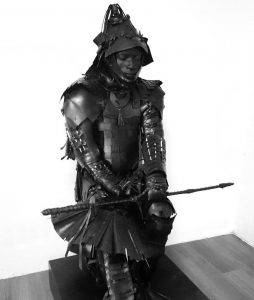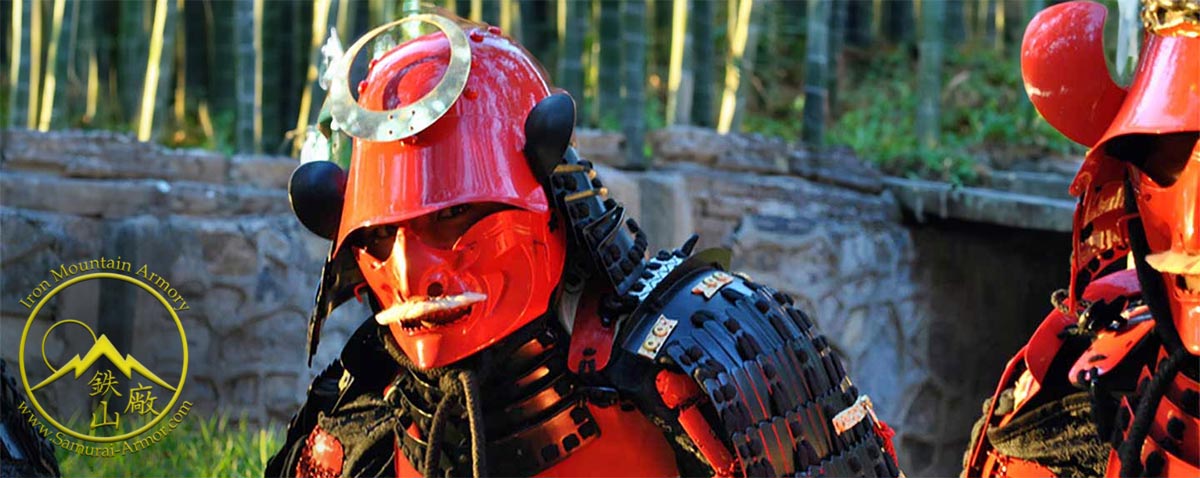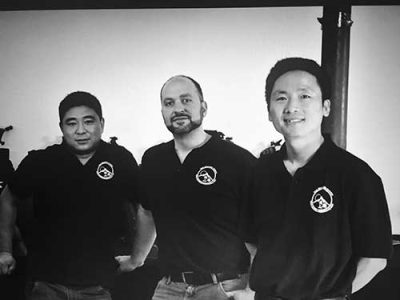The First African Samurai

In a culture like that of ancient Japan, outsiders during the time of the Samurai, were usually kept at a distance, if not ignored completely. Except in those rare cases where something so unusual occurs, that the norms get thrown out the window. This was the case with Yasuke, the First African Samurai, a story of cultural immersion. This is one interpretation of his life from my own research and studies.
The story of Yasuke…
Very little is known about the first African Samurai. What we do know is according to historical records, an Italian Jesuit missionary named Alessandro Valignano was the “Provincial of India” in 1574. He was later given the position of “Visitor to the Indies” by Pope Gregory XIII. His mission was to audit and support the Jesuit activity in China and Japan. During his first visit to Japan (1579 – 1582) he arrived with his publication “Catechismus Christianiae Fidei” and his entourage, which included a muscular, 6’ 2” African man. Almost nothing is known of this man other than he traveled with Valignano through India, China and now Japan. He was said to be well dressed, educated and spoke several languages, including some Chinese and Japanese. It is unclear if he was a body guard, slave, servant or indentured servant to Valignano. What is clear is that Valignano was primarily stationed in Goa, India which received supplies through the Portuguese trade port of Mozambique, Africa. This port was very well known for its slave trade and the Jesuits were known for having slaves.
It is important to note that before Valigano’s arrival most of Japan had been stuck in the turmoil of war since 1467. Just a few years before his arrival, around 1573, most of the fiefdoms had been brought under the control of the Daimyo Oda Nobunaga and his vassal Toyotomi Hideyoshi.
 It is documented that in 1581 Valignano and his entourage arrived into the Imperial capital city of Japan, Kyoto. Their arrival caused a stir with rumors quickly spreading of a tall and mysterious, charcoal skinned man. The people were so excited to witness such a man that it was said they broke down the door of the Jesuit church just to see him. Japanese did not have any negative notions towards dark skinned people. In fact, many Japanese believed black-skin reflected the embodiment of the Buddha (in Japanese tradition). More so, this dark skinned man stood more than 1 foot taller then the average Japanese man.
It is documented that in 1581 Valignano and his entourage arrived into the Imperial capital city of Japan, Kyoto. Their arrival caused a stir with rumors quickly spreading of a tall and mysterious, charcoal skinned man. The people were so excited to witness such a man that it was said they broke down the door of the Jesuit church just to see him. Japanese did not have any negative notions towards dark skinned people. In fact, many Japanese believed black-skin reflected the embodiment of the Buddha (in Japanese tradition). More so, this dark skinned man stood more than 1 foot taller then the average Japanese man.
Eventually the rumors and gossip grew so loud it reached the ear of Lord Nobunaga himself. He ordered the African man to be brought before him. At first he thought he might be a Portuguese trader who had painted his skin to trick the people. To confirm his suspicion, he had the African stripped to his waist and washed, in attempt to remove any paint. Upon realizing the man was naturally dark skinned, Lord Nobunage took a vested interest in him giving him the name “Yasuke”. This name is most likely a “Japanization” of his birth or Christian name. As Lord Nobunaga asked Yasuke many questions about his home country he was surprised to learn that Yasuke could speak Japanese.
Lord Nobunaga was so impressed with Yasuke, he requested him to join his clan as a samurai at which Yasuke deferred until he finished his commitment to Valignano. Lord Nobunaga gave Yasuke a travel-pass and enough money for him to return to Kyoto. After a short time, true to his word, Yasuke returned to Kyoto and entered the service of his new Lord. Instructed in the code of Bushido, Budo Martial Arts and Samurai warfare. Yasuke, became the first non-Japanese samurai in history and was awarded all the rights and privileges of his title. With his education, skill, size, strength, height and loyalty, Yasuke proved himself to be of great value to Lord Nobunaga and was given the prestigious position of personal body guard.
With Yasuke being so tall and dark skinned, he was quickly spotted on the battlefield. In Tenmokuzan, he had become revered as a ferocious warrior who possessed all the strength, speed and wit of a demon. On the battlefield he was feared and known as the “Black Demon”. Off the battlefield he was known as the “Dark Guardian” who watched over Lord Nobunaga and his family. Although there is no formal note of it, I am certain Yasuke played a role in defeating the Takeda clan. Which is how he earned his name “the Black Demon of Lord Nobunaga”.
Upon returning to Kyoto in 1582, Lord Nobunaga sent his forces north to continue fighting while he rested in a Buddhist temple of Honno-Ji, where Yasuke remained at his side. Now not on the battlefield, Yasuke took the roll of a “dark guardian” who watched over Oda and his family. However even the great Yasuke was not strong enough to protect Lord Nobunage when his retainer Akechi Mitsuhide rebelled against him, attacking the temple and killing Lord Oda Nobunaga.
Yasuke did manage to cut his way through the Mitsuhide’s men and was able to escape. He made his way to Nijo castle, where he swore to protect Nobunaga’s son, Oda Nobutada. Akechi Mitsuhide arrived just after Yasuke and immediately attacked Oda Nobutada’s forces who have just gathered the day before. Yasuke once again threw himself into the fray of battle, slaughtering many of Mitsuhide’s men. Overwhelmed Nobutada’s forces eventually fell and Yasuke was subdued, then captured. With no other choice, Nobutada accepted his defeat and committed seppuku, a ritual suicide to maintain his family’s honor.
There was some debate about what should become of Yasuke. Should he be forced to commit seppuku which was reserved specifically for samurai? Should he be executed? What to do? There was some debate if Yasuke was really a samurai as he was not Japanese. Maybe as he was forced or coerced into service of the Jesuits, he may have been coerced into service by Lord Nobunage. Maybe it was fate, maybe it was Akechi Mitsuhide’s contempt for Yasuke and not believing him to be a real Samurai or maybe it was the other generals who had grown to respect Yasuke and wanted him to live. But it was decided that his life would be spared if Yasuke swore never to touch a sword again. He returned to the Jesuits who praised God and welcomed him back to the church. However, it is not known which adventure he would choose. Return to work for the Jesuit, return to Africa or another land or perhaps, stay in Japan and live in peace amongst the Japanese in a monastery. There are stories of a small village with families that appeared to be of half Japanese, half African decent, but that is another story.
Best said by Leslie Nguyen-Okwu, “Although his samurai career was short-lived, Yasuke became the hero of Kuro-suke (くろ助), a children’s historical fiction book that won the Japanese Association of Writers for Children Prize in 1969. The book ends with Yasuke living to fight another day. But when he sleeps at night, he dreams of his parents in Africa and silently cries — the story of a valiant warrior triumphing against all odds, but also the story of a pained young man dropped into a world of strangers. His sacrifice, not his sword or slaughter, made him a true samurai.”

Conclusion:
There are some things we know certain to be true, such as Japan is a country with a long history that honors tradition, bravery and loyalty. With the little known about Yasuke, some facts about him are quite certain. Yasuke was an educated, loyal, brave and honorable warrior of great strength and stature. These facts about Yasuke are undeniably true, as the mighty Daimyo Oda Nobunage broke with tradition by accepting Yasuke, a foreigner, into his clan and honoring him with the position of his protector. He will forever be remembered along with the other legendary Samurai of his time.
If you enjoyed my summary of the African Samurai, feel free to comment and join the discussion below. What stories about the Samurai have you found to be strange, mysterious or even completely baffling?
Source:
https://en.wikipedia.org/wiki/Yasuke
Lockley, T. Girard, G (2019) “African Samurai: The True Story of a Legendary Black Warrior in Feudal Japan”
Illustrated Religious Texts in the North of Europe, 1500-1800
Leslie Nguyen-Okwu “THE INCREDIBLE LEGEND OF THE FIRST BLACK SAMURAI”




Very interesting, thanks for sharing!